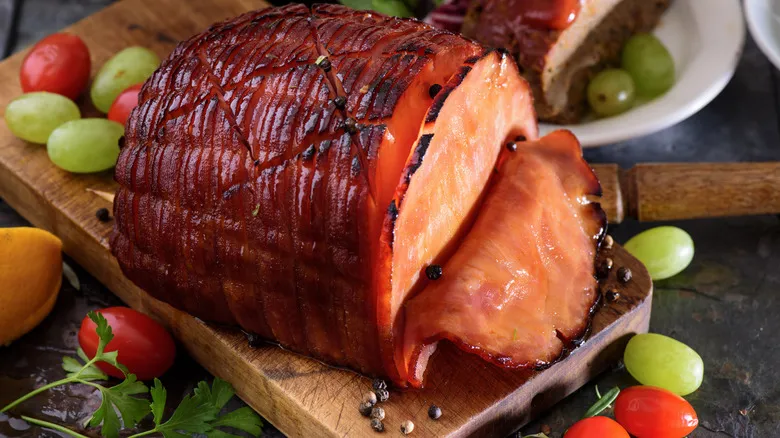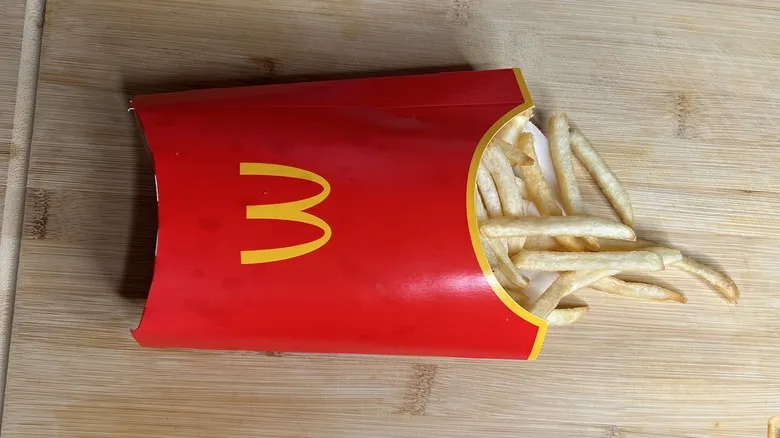Score early, glaze late
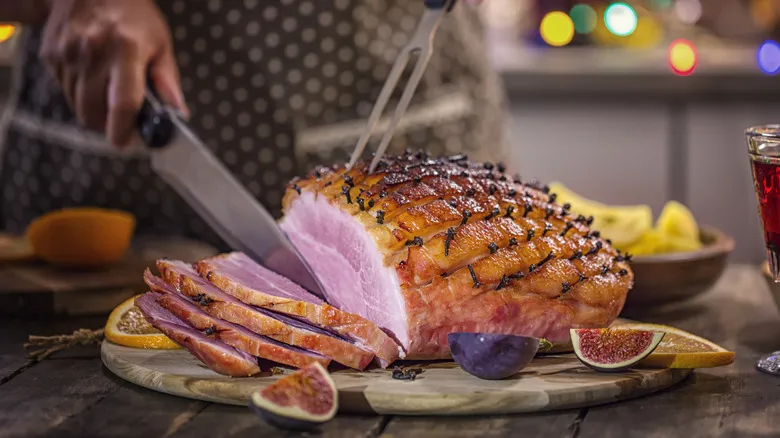
Whether your ham is raw or pre-cooked, be sure to score it so the glaze can penetrate the meat. Unlike the glaze, add cloves and any seasonings before placing the ham in the oven. The advantage of waiting until the end of the cooking process to apply the glaze is that you can prepare or warm it up while the ham is baking. This gives you ample time to mix the ingredients and simmer them to achieve the perfect consistency. Since a large, uncooked ham can take several hours to cook, set a timer to remind you when to prepare and apply the glaze.
When it’s time to glaze, take the ham out of the oven for safety and ease. Brush the glaze over the top and sides, then return it to the oven. You can turn the ham halfway through cooking and glaze the other side for a more balanced flavor and appearance. Additionally, you can apply a final top layer, such as a sauce, while the ham rests on the counter.
If you have a small, pre-cooked ham that only needs 15 to 20 minutes in the oven, it’s best to add the glaze at the start. Everything will cook together perfectly. Alternatively, elevate the flavor and presentation by using brown sugar and a kitchen torch for a unique glazing technique.
Recommended
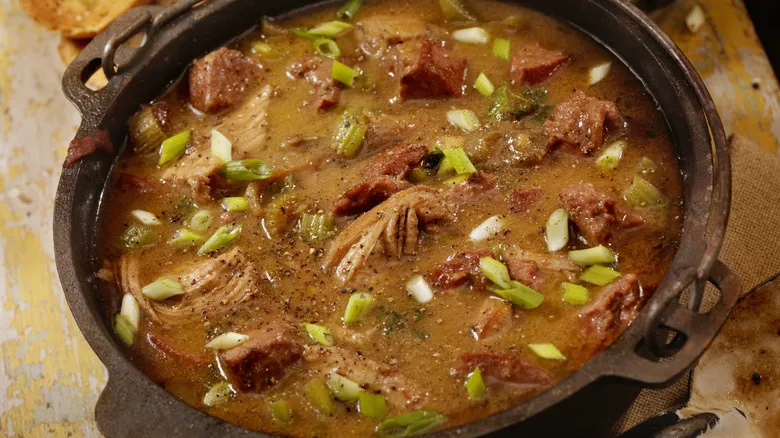
For The Perfect Gumbo You Don't Overlook This Key Component
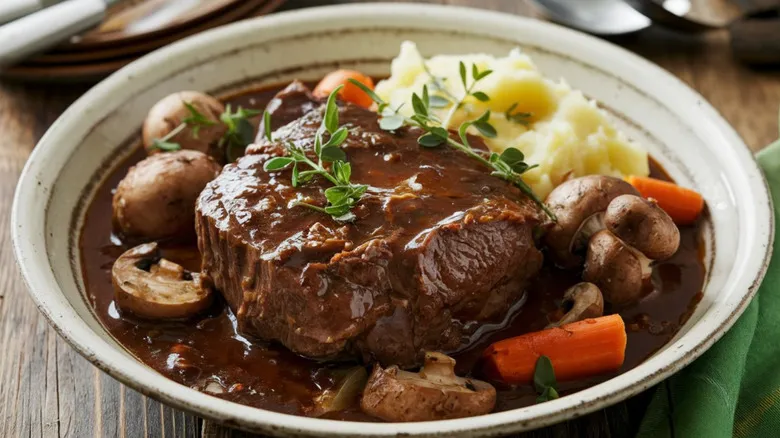
What Are The Best Fresh Herbs For Beef Stew?
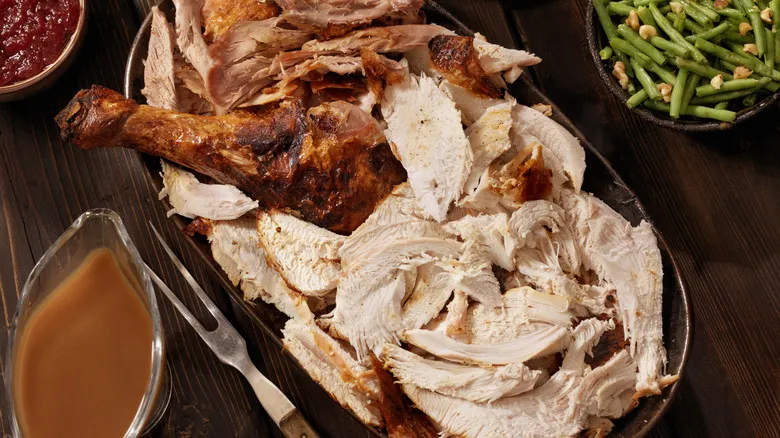
Avoid Dry Leftover Turkey By Turning It Into A Classic Dish

Ina Garten's Butter Tip For Keeping Stuffed Turkey Breast Moist Is So Simple
Next up

